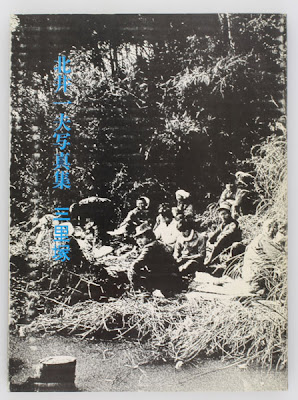The city of Leiden was besieged from 1573 until 1574, when it was finally relieved. Leiden’s Relief (Leidens Ontzet) is celebrated annually in order to commemorate the siege during the Eighty Years’ War and the relief of the city on October 3, 1574.
The siege and the relief of the City of Leiden took place during the Eighty Years’ War (1568-1648). Intially the City Council remained loyal to the Sovereign Lord King Filips II of Spain, but in June 1572, the city chose to be loyal to Prince William of Orange. In an attempt to regain power over the city, the Spanish starved the inhabitants of Leiden in order to force them to surrender. During the second siege, 6000 of the 18000 inhabitants of Leiden died of starvation and the plague. The City Council remained unmoved and would not even consider surrendering to the Spanish oppressor.
The siege and the relief of the City of Leiden took place during the Eighty Years’ War (1568-1648). Intially the City Council remained loyal to the Sovereign Lord King Filips II of Spain, but in June 1572, the city chose to be loyal to Prince William of Orange. In an attempt to regain power over the city, the Spanish starved the inhabitants of Leiden in order to force them to surrender. During the second siege, 6000 of the 18000 inhabitants of Leiden died of starvation and the plague. The City Council remained unmoved and would not even consider surrendering to the Spanish oppressor.
The “(water)geuzen” pierced the dikes at Rotterdam and Capelle aan den IJssel in September 1574, in order to flood the polder lands. The outcome of this action depended on the winds which would have to move the water towards Leiden. The City Council did not surrender to the Spanish King as they had been informed of the plan to relieve the city.
The water rose high and so the Spanish troops fled. According to tradition, it was the little orphaned boy named Cornelis Joppenszoon that found a hotpot (hutspot) in the deserted Spanish army camp Schans Lammen (near the current Lammebrug) and informed the citizens that Leiden had been freed. It was early morning when the Geuzen sailed over the Vliet into the city with a load of herring and white bread on board.
As a token of appreciation for the city’s brave resistance, William of Orange founded the University of Leiden on February 8, 1575.
As a token of appreciation for the city’s brave resistance, William of Orange founded the University of Leiden on February 8, 1575.
Erwin Olaf schildert Leidens Ontzet
Tracy Metz
De haring en het witbrood hebben plaatsgemaakt voor hotdogs en shoarma, maar nog steeds viert Leiden elk jaar op 3 oktober zijn bevrijding van de Spanjaarden.
Dit jaar doen de Universiteit Leiden en Museum De Lakenhal dat met de tentoonstelling Vrijheid! Leidens Ontzet 1574-2011, waarvoor fotograaf Erwin Olaf een aantal hedendaagse historiestukken heeft gemaakt. Op 31 oktober ontvangt Olaf uit handen van staatssecretaris Zijlstra (Cultuur, VVD) de Johannes Vermeerprijs, de staatsprijs voor de kunsten waarmee een bedrag van 100.000 euro is gemoeid.
Olaf heeft zich onder andere laten inspireren door de schilderijen die van het Leidens Ontzet zijn gemaakt tussen de zestiende en de negentiende eeuw. Een daarvan is een doek uit 1861 van Jan Hendrik van de Laar, De Gebedsdienst na Ontzet Leyden, waarvoor de schilder - net als de fotograaf nu - een groot aantal figuranten opstelde in de Pieterskerk. Olafs grote groepstafereel meet twee bij bijna drie meter. De figuranten werden gevonden via een oproep in de lokale krant of zijn van terrassen in de stad geplukt, enkelen zijn professioneel model.
Technisch gezien ligt de uitdaging bij het vastleggen van enkele tientallen modellen in een grote historische ruimte, schrijft Olaf in een toelichting. Het gevaar dat hierin schuilt is dat het acteren en de compositie ondergeschikt worden gemaakt aan de techniek. Om dat te voorkomen heeft hij tijdens het fotograferen de grote scène in de Pieterskerk opgedeeld in drieën, die vervolgens door een Spaanse photoshop-specialist in kleuren en contrasten onzichtbaar aan elkaar zijn gesmeed. Hierdoor is de kans op een kloppend geacteerd en uitgelicht beeld vele malen groter, omdat ik veel meer aandacht kan besteden aan de acteurs en de details.
De regie werd er niet makkelijker op doordat hij zelf een vrouw met Down-syndroom, een kind van twee en een hond aan de cast toevoegde. Hier en daar duiken er hedendaagse attributen op - een iPod, een vrouw met een moderne halsketting, iemand die op teenslippers loopt.
Olafs interpretatie van het beleg is harder, donkerder, wellicht realistischer, dan die in de traditionele geïdealiseerde historiestukken. Zo laat hij met zijn beelden van pestdokters zien dat de pest - volgens nieuwe onderzoek van de universiteit - meer doden eiste dan de honger.
Er is meer dood en verderf, de wonden zijn echter, de wanhoop tastbaarder. En anders dan zijn schilderende voorgangers portretteert hij twee vrouwen als hoofdfiguur en zelfs een zwarte man, geïnspireerd door een zestiende-eeuws schilderij uit het Rijksmuseum van een welgestelde Afrikaanse koopman. Volgens Maartje van den Heuvel, curator fotografie bij de afdeling bijzondere collecties van de Universiteitsbibliotheek, heeft Olaf met deze opdracht een nieuw genre uitgevonden, dat van de 'historische fotografie'.
Tracy Metz
Info: Vrijheid! Leidens Ontzet 1574-2011, 30 sept. t/m 8 jan. in Museum de Lakenhal (lakenhal.nl) en de Universiteitsbibliotheek Leiden (bibliotheek.leidenuniv.nl). Olaf geeft interviews over dit project op 16 oktober om 15.00 uur in De Lakenhal en op 27 oktober om 14.00 uur op een middag van het tijdschrift Scherptediepte over fotografie en mediacultuur in Paradiso, Amsterdam.
Foto-onderschrift: 'Liberty - pest en honger tijdens het Leidens beleg', een van de foto's die Erwin Olaf maakte in opdracht van Museum De Lakenhal en de Universiteit Leiden.
Foto-onderschrift: 'Liberty - pest en honger tijdens het Leidens beleg', een van de foto's die Erwin Olaf maakte in opdracht van Museum De Lakenhal en de Universiteit Leiden.
Op dit artikel rust auteursrecht van NRC Handelsblad BV, respectievelijk van de oorspronkelijke auteur.






























































